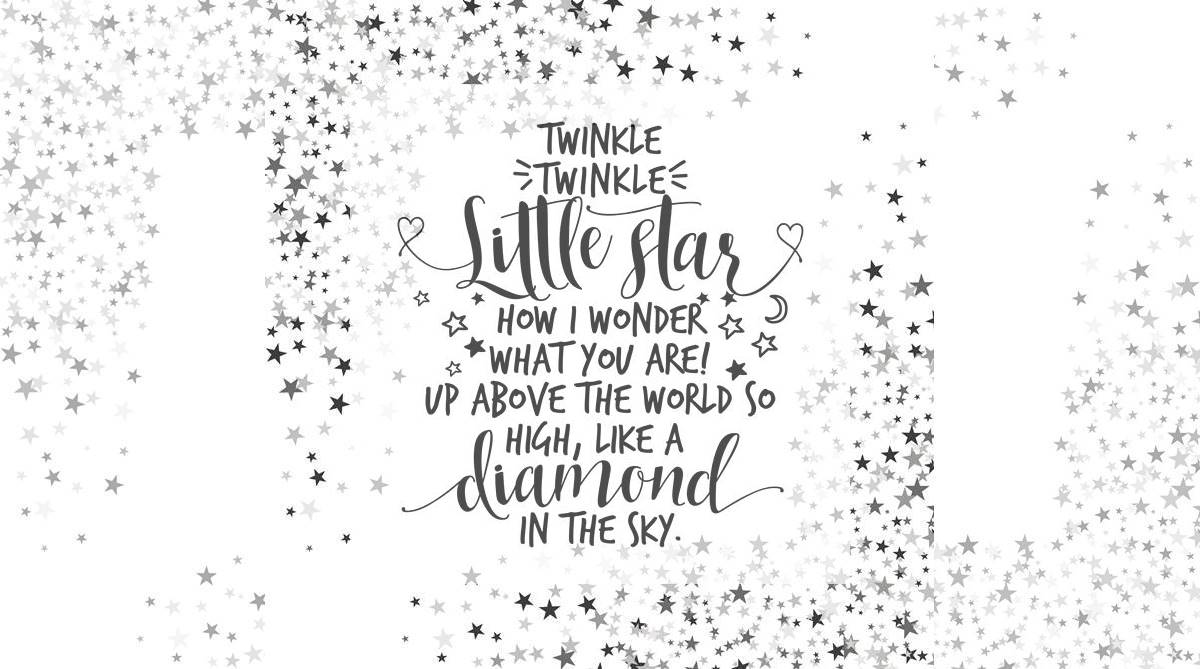The wooden horse
The large Victorian edifice of my mother’s grandfather was a two-storied building of brick and mortar built in the late…
Everybody’s favourite nursery rhyme was published in 1806 by Jane Taylor. It was part of a greater movement where writing for children was much in vogue

(Photo: Getty Images)
Twinkle, twinkle little star
How I wonder what you are.
Up above the world so high,
Like a diamond in the sky!
These are lines of one of the world’s most famous nursery rhymes. That these lines are part of an English poem written in the 19th century (the Romantic period) is a much lesser known fact. Written by Jane Taylor (1783-1824), the lines are part of a poem called “The Star”. Composed in couplets, the poem was first published in 1806 in Rhymes of the Nursery, a collection for children by Taylor and her sister, Ann.
Although born in Boston, Massachusetts, Taylor moved to England. Her father, Isaac Taylor, was an engraver and her mother, Anne Martin Taylor, wrote moral and religious works. She and her sister, Ann, published Original Poems for Infant Minds(1805), Rhymes for the Nursery(1806), Hymns for Infant Minds (1808), Limed Twigs to Catch Young Birds (1808), City Scenes; or, A Peep into London:for good Children(1809), Original Hymns for Sunday School (1812), and The Linnet’s Life:Twelve Poems(1822). Her Essays in Rhyme appeared in 1816,and contained some poems too. In the fictional Correspondence between a Mother and Her Daughter at School (1817), Taylor collaborated with her mother. The sisters also revised and expanded an 18th century book of humorous children’s verse, which was published as Signor Topsy-Turvy’s Wonderful Magic Lantern,or,The world turned upside down (1810). They also contributed to The Associate Minstrels (1810), a book of children’s poems.
Advertisement
After her sister’s marriage, Taylor moved to her brother’s home in Devon, England, where she composed her novel for children, Display: A Tale for Young People (1815), and the satire Essays in Rhyme on Morals and Manners (1816). She continued writing for children and since 1816 was a regular contributor to Youth’s Magazine. She was also an engraver.
Taylor died of breast cancer at the age of 40. After her death, her brother, Isaac, collected most of her works and included a biography of her, in The Writings of Jane Taylor, In Five Volumes (1832). The critic, Stuart Curran notes, “Taylor’s capacity to reveal the inner life as a thing is, it could be asserted, unrivalled in English literature before Dickens.”
The following is the text of Taylor’s The Star:
Twinkle, twinkle little star ,
How I wonder what you are.
Up above the world so high,
Like a diamond in the sky.
When the blazing sun is gone,
When he nothing shines upon,
Then you show your little light,
Twinkle,twinkle,all the night.
Then the traveller in the dark,
Thanks you for your tiny spark,
He could not see which way to go,
If you did not twinkle so.
In the dark blue sky you keep,
And often through my curtains peep,
For you never shut your eye,
Till the sun is in the sky.
As your bright and tiny spark,
Lights the traveller in the dark.
Though I know not what you are,
Twinkle,twinkle,little star.
The poem is located both inside the house and outside in the open —the star shining in the sky also peeps into the house through the curtains. The voice heard in the poem is that of a mother or nurse, a carer, who lulls a child to sleep and the child in The Star is charmed by the calming, soothing voices all around.
The presence of the child associates this poem with many other poems written in the British Romantic period where the figure of the child features so prominently, for example, in William Wordsworth’s Immortality Ode and Lucy Gray and Samuel Taylor Coleridge’s Frost at Midnight among many others.
One should also remember that Lewis Carroll parodied the lines from The Star in the Mad Hatter’s Tea Party in his classic, Alice in Wonderland,
Twinkle, twinkle little bat!
How I wonder what you’re at!
Up above the world you fly,
Like a tea-tray in the sky.
Carroll continues, “Here the Dormouse shook itself, and began to sing in its sleep, Twinkle, twinkle, twinkle, twinkle —and went on so long that they had to pinch it to make it stop”.
The tune of the version that people all over the world are familiar with is a French one and dates from 1761. In the 1770s, a poem called, “Ah! vous dirai-je Maman (Ah! Will I tell you, Mother), was set to the now familiar Twinkle, twinkle little star tune. Later, in 1781-82, Wolfgang Amadeus Mozart wrote his variations on Ah vous dirais-je, Maman and created a beautiful piece based on the tune. This is the now common, familiar tune that comes to mind whenever the nursery rhyme is referred to and which most of us learnt as children.
The late 18th century saw pioneering work in the field of children’s education as the period also saw the growth of a new literature written specifically for children. In keeping with the spirit of the times, writers often used the figure of the child as a symbol of hope. The child becomes an image of a changed, new world order that revolution would possibly bring about. While the literature written for children in this period presents the world as seen through their innocent eyes, it also speaks of the values that the child will need to nurture to live in this world.
Another poem by Jane Taylor, The Violet, refers to one of these values.
Then let me to the valley go
This pretty flower to see;
That I may also learn to grow
In sweet humility.
(The writer is head and Associate Professor, Department of English, Brahmananda Keshab Chandra College, Kolkata)
Advertisement